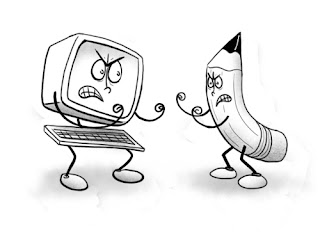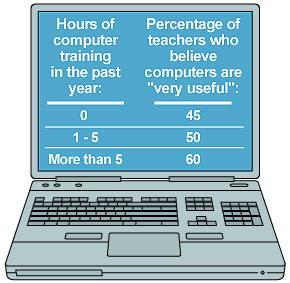This video was very interesting and educational. I have taken online classes while at USA and found them to be somewhat more difficult than attending in-class lectures. The absence of face to face encounters with a teacher was frustrating. Although, I was able to send e-mails and communicate through class discussions, I felt alone in my educational journey. This video shows that online classes would be more effective if teachers helped students become members of Connectivism. In this, learning occurs as part of a social network of many diverse connections and ties. It is made possible through many tools and techniques with the connections made being the most important part.
I am unfamiliar with sites such as Google Scholar and iTunesU, but I believe they can be very helpful in an educational setting. Both sites provide expert information. The Social Bookmarking site seems to be an excellent tool for students participating in online as well as in-class learning environments. It allows them to organize the information they have learned and share it with others. The video mentioned Blogging which I have found to be great learning tools. I was overwhelmed when I first started blogging for this class, but I now enjoy sharing my opinion and information with others as well as receiving feedback from my peers and seasoned educators. These networks provide students with wonderful learning opportunities and help leave their intellectual trail.
The teacher is an absolutely necessary part of this process. Without an instructor, students would not obtain the skills to create an effective learning network. Teachers teach students how to; build their learning networks, provide guidance, show how to communicate effectively and properly with experts, differentiate between good and bad information, and help organize the extensive information obtained. I honestly feel like I have learned a lot through this class, but I am not sure that I am ready to teach a network student to the extent that the video illustrates. I would utilize blogging, podcasts, and certain social networks, but I don't feel that I know enough yet to create my own much less have a student create a Social Bookmarking Site. I am willing to learn!
A 7th Grader's Personal Learning Environment (or PLN)
This video illustrates that PLE's allow students to incorporate education and fun. School projects and educational information and resources can exist on one place along with the student's personal music and facebook page. It allows them to collect and share various information with their peers. I like that they can collect certain information from various sites and place it in one organized spot to conveniently refer back to and give credit to used sources. I have never heard of Glogster until I watched this video, and I am now very interested in it. It is a digital poster that incorporates text, video, audio, and graphics on one page. This type of learning provides freedom.
SMARTboard Usage
I have never used a SMARTboard before, so I am unable to form my own opinion on its usefulness. Why Smartboards are a Dumb Initiative by Michael Staton and Why I Hate Interactive Whiteboards by Bill Ferriter both make arguments against the use of SMARTboards. These instructors view them as useless tools advocating they are not cost-effective and do not enhance the learning experience. I found a website that advocates the use of SMARTboards and gives teachers great instructions and techniques for using them. http://www.teacherslovesmartboards.com/ This site provides lessons on how to incorporate animation, games, and different subject areas into the use of SMARTboards. It advocates that interactive white-boards draw students' attention and makes explanations easier to understand. Although I have never used one, I believe that they could come in handy when showing videos and illustrating an explanation more effectively.









